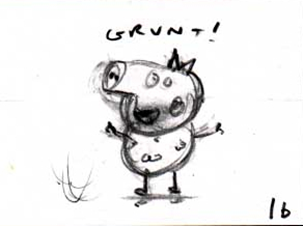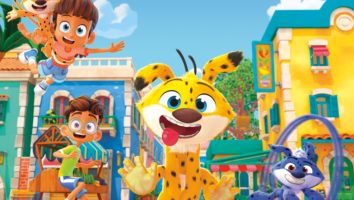
Making the main character a pig allowed Peppa to get muddier and messier than real-life children are usually allowed to be.
Powerhouse preschool brand Peppa Pig has been bringing home the bacon for 20 years now, generating global annual sales in the region of US$1.7 billion in 2022.
The TV concept’s porcine protagonists were born in the sketchbooks of creators Neville Astley and Mark Baker, who chose pigs because of the scope for anthropomorphism—everything from their cute snorts/oinks to their penchant for jumping in mud puddles was a perfect fit for emulating and engaging preschoolers.
“The ears were initially pointier, with some color depth,” says Esra Cafer, Hasbro’s SVP of franchise strategy and management for preschool & fashion. “Ultimately, they became more rounded and flattened in their coloring to get closer to the way young children draw.” The creators’ shingle Astley Baker Davies originally produced the series, with Karrot Entertainment taking the reins in 2021.
Peppa-mania hit global scale in the 2010s, says Hasbro Entertainment president Olivier Dumont, who played a key role in retooling how the show was scheduled. Rather than airing the five-minute episodes as stand-alones, he convinced international buyers to combine them into half-hour blocks like broadcasters in the UK typically did at the time. And this change proved to be crucial for maximizing the brand’s exposure in Europe, Asia and Australia.

The series stood out in the preschool landscape thanks to its humor, which appealed to both kids and adults (an example being the famous “whistling” scene)
Peppa Pig made its US debut in 2005 as part of Cartoon Network’s Tickle U preschool block lineup—but it was redubbed with American accents. “The perception at the time was that parents wouldn’t accept [a show with British accents] in the US,” Dumont explains. But that thinking had clearly changed by 2011, when Nickelodeon US bought the series and insisted on the original voice track—which is an iconic element of the show today as its broadcast footprint spans 180-plus countries.
This story originally appeared in Kidscreen‘s February/March 2024 magazine issue.
























